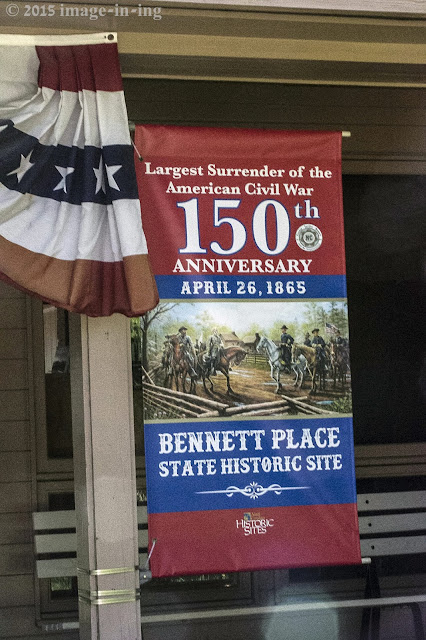Despite efforts to preserve the original Bennett House, a fire destroyed the house in 1921. The house which stands there today is an original house built in approximately 1840. It was owned by the Proctor family, who lived about 4 miles from the Bennett's home. In 1960, the Proctor house was moved and placed on the foundation of the Bennett house site, then modified and restored to resemble an almost-exact duplicate of the original Bennett Home.

The rock chimney is the only artifact remaining from the original house of James and Nancy Bennett.



Here is the text of the document signed by Johnston and Sherman, which resulted in 89,270 Confederate soldiers laying down their arms: the largest surrender of the Civil War, the bloodiest war ever fought on American soil:
Terms of a Military Convention, entered into this 26th day of April, 1865, at Bennitt's House, near Durham Station, North Carolina, between General Joseph E. Johnston, commanding the Confederate Army, and Major-General W.T. Sherman, commanding the United States Army in North Carolina:
All acts of war on the part of the troops under General Johnston's command to cease from this date.
All arms and public property to be deposited at Greensboro, and delivered to an ordinance-officer of the United States Army.
Rolls of all the officers and men to be made in duplicate; one copy to be given to an officer to be designated by General Sherman. Each officer and man to give individual obligation in writing not to take up arms against the Government of the United States, until properly released from this obligation.
The side-arms of officers, and their private horses and baggage, to be retained by them.
This being done, all the officers and men will be permitted to return to their homes, not to be disturbed by the United States authorities, so long as they observe their obligation and the laws in force where they may reside.
W. T. Sherman, Major-General Commanding United States Forces in North Carolina
J. E. Johnston, General Commanding Confederate States Forces in North Carolina
Approved: U. S. Grant, Lieutenant-General




The Unity Monument was erected in 1923 to symbolize the reunification of the United States. The single top crosspiece joining the two pillars represents the reunification of the North and South.


